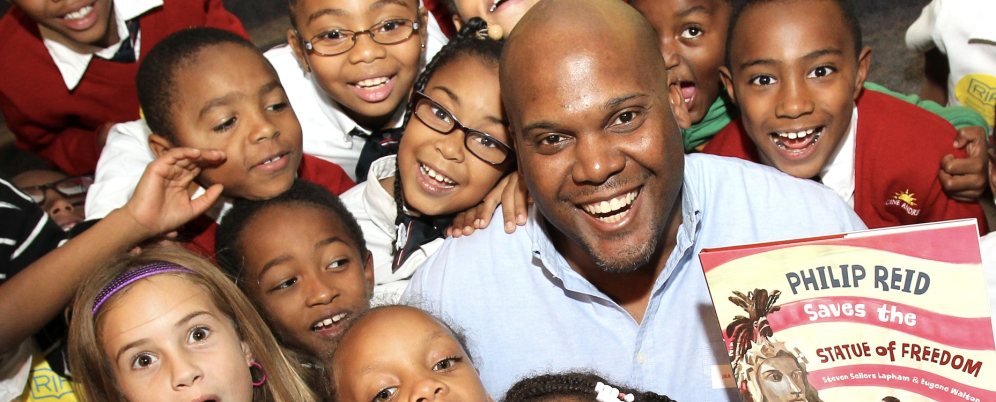Reading Beyond the Page
This article was written by Dr. Erin Bailey, RIF’s Director of Literacy and Content, and originally published in the April 2024 issue of Language Magazine. Read on to see how Dr. Bailey demonstrates the ways that reading can inspire students to take learning outdoors, while also working towards shaping a more sustainable future. Find additional resources in our recently refreshed Sustainable Futures Center to discover ways to assist children in developing their understanding of the planet while inspiring them to care for it throughout their lives.
As screentime continues to proliferate in schools, it is becoming increasingly important for educators to plan intentional outdoor learning opportunities to engage students in the natural world and their local communities. We should recognize the power of outdoor learning and that when paired with powerful, engaging reading materials, students learn, thrive, and grow.
The Benefits of Outdoor Learning
When education is taken outside beyond the school doors, students’ learning blossoms. Numerous studies have demonstrated the positive impacts of outdoor learning:
- Motivating learners (Fisher-Maltese and Zimmerman, 2015; Tan et al., 2007);
- Supporting independence and self-directed learning (Chen et all., 2005); and
- Facilitating discourse (McClain and Zimmerman, 2014).
Beyond these clear learning advantages, outdoor learning environments became increasingly popular in recent years as the population moved outdoors in an effort to limit the spread of the COVID-19 virus. During the pandemic, I was working as a literacy specialist in Washington, DC, and conducting my own research study for my dissertation. As online learning continued into spring 2021, teachers at my school were encouraged to close their Zoom rooms by 2:00 p.m. each day and invited to host outdoor learning for students around the city. The aim was to support the socio-emotional well-being for both students and teachers and provide opportunities for students to become thoughtful citizens and imaginative and inquisitive problem solvers (Bailey, 2024).
Being in Washington, DC, we were lucky to have access to several wonderful public parks and gardens with supporting educational materials during that time. If you are interested in leveraging the power of outdoor learning for your own students, whether you are in an urban environment or a rural community, there are many ways you can use children’s literature as a launching point for outdoor learning in general and, more specifically, to inspire children to take action toward sustainability and environmental issues.
Using Books in Outdoor Learning
At Reading Is Fundamental (RIF), we have identified four domains to address sustainability and environmental issues: (1) sustainable solutions, (2) natural resources, (3) environmental justice, and (4) careers in STEM. To follow, for each domain, I have shared examples of children’s literature, applications from the school in my study, and suggestions for how educators can integrate these into their own curriculum and instruction. These domains can be further explored at RIF’s Sustainable Futures Center, a free online destination that offers a host of suggested books, reading resources, research and rationale, and student activities to further learning on the topic.

Natural Resources
This domain helps students to explore the earth’s natural resources and how humans use these resources, such as wind, water, and energy.
Using the book Riparia’s River, written by Michael J. Caduto and illustrated by Olga Pastuchiv, allows students to see that they can take action to protect their local natural resources. In this story, a group of friends discover that their local swimming hole has become polluted, and they work together to create a solution.
In my own school environment, invasive vines known as mile-a-minute threaten the natural resources because they outcompete native plants for natural resources such as sun, soil, and water. This also has impacts on the insects and animals that rely on native plants for food and shelter. At my former school, each week, a group of middle school students met at a local park to remove these weeds. Not only does this protect the environment, but it also creates social and emotional learning opportunities for developing teamwork and empathy and becoming stewards of the local community.
Looking for an idea to incorporate this domain into your instruction? Working with your own students, research the natural resources in your area. Are any of these resources threatened? Use your research and group discussion as a starting point for designing your own environmental service project.
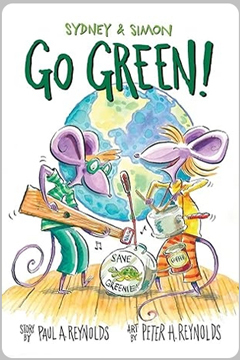
Sustainable Solutions
Sustainable solutions focus on ways we can integrate sustainability into our daily routines, such as recycling and food waste reduction.
Using literature as a starting point, the book Sydney & Simon: Go Green!, written by Paul A. Reynolds and illustrated by Peter H. Reynolds, shares the story of a mouse named Sydney who discovers that a green sea turtle has been harmed by trash in the ocean during a class trip to an aquarium. Together with Simon, she collects data on the trash habits of the school and creates a way for their school to cut down on waste production and reuse their materials.
All schools produce waste. One way to address this topic through an inquiry project is to measure how much paper and food waste your class or school produces. There are excellent math connections, such as selecting a standard unit of measurement, graphing waste production, and designing a plan for how to reduce waste. My former school utilized a project-based learning approach, and students’ inquiry led them to a solution of designating a table in the cafeteria where students could place unwanted food instead of throwing it away. This created other delicious opportunities, such as when one teacher collected all the uneaten apples and used them to bake apple tarts.
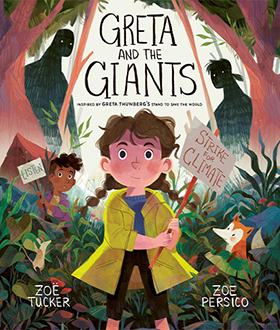
Environmental Justice
Environmental justice looks at the intersections of equity of access, protection of precious resources, and shared responsibility for ensuring the planet is inhabitable.
Using a picture book as a launching point, Greta and the Giants: Inspired by Greta Thunberg’s Stand to Save the World, written by Zöe Tucker and illustrated by Zoe Persico, shares the story of the 15-year-old Nobel Peace Prize nominee who created a global movement to raise awareness about climate change. In the story, the giants are an allegory to help even the youngest readers understand the effects of deforestation.
Students at my former school had the opportunity to participate in the youth-led social movement Fridays for Future, which gave them chances to develop their civic identities and commitment to sustainability. If you do no have an official Fridays for Future gathering in your area, you can join the movement by registering or create your own civic engagement experience by having students design their own march signs. Select a natural resource in your community and use words, images, and colors to express why it needs to be protected.
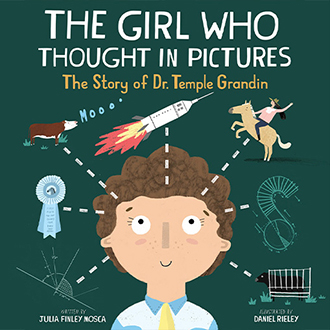
Careers in STEM
This domain aims to inspire every young reader to consider the possibilities of a career in one of the science, technology, engineering, and math (STEM) fields.
Books are an excellent way to introduce students to the myriad of careers in STEM. A biography written in rhyme, The Girl Who Thought in Pictures: The Story of Dr. Temple Grandin, written by Julia Finley Mosca and illustrated by Daniel Rieley, shares the story of a modern science hero, Dr. Temple Grandin, who was diagnosed with autism at a young age and overcame obstacles to earn degrees in animal science and engineer more humane livestock systems.
It is inspiring to read about historical figures who are pioneers in STEM careers, and it can be even more inspiring to meet them in real life. Reach out to your students’ families or local community members who work in STEM fields to come talk to your students and answer their questions. We had the opportunity for the construction team who were building our local playground to come talk to the middle school students. Like Dr. Temple Grandin, the lead engineer of the playground project shared her experiences of being a woman in a male-dominated profession and wanted each middle school girl to know that she could pursue a career in STEM.
In these ways, books act as launching points for creating robust outdoor learning activities – whether you’re in a rural, urban, or suburban setting – that can support social-emotional well-being, enhance the curriculum, and expand students’ perspectives on shared responsibility for our planet. It is in books and outdoors that we can create a more sustainable future.
References
Chen, Y.S., Kao, T.C., and Sheu, J.P. (2005). “Realizing Outdoor Independent Learning with a Butterfly-Watching Mobile Learning System.” Journal of Educational Computing Research, 33 (4), 395-417.
Fisher-Maltese, C., and Zimmerman, T. D. (2015). “A Garden-Based Approach to Teaching Life Science Produces Shifts in Students’ Attitudes towards the Environment.” International Journal of Environmental and Science Education, 10 (1), 51-66.
McClain, L. R., and Zimmerman, H. T. (2014). “Prior Experiences Shaping Family Science Conversations at a Nature Center.” Science Education, 98 (6) 1009-1032.
Riley, K., and Proctor, L. (2021). “A Physical Education/Environmental Education Nexus: Transdisciplinary approaches to curriculum for a sense of belonging.” Australian Journal of Environmental Education, 1-12. Tan, T.H., Liu, T.Y., and Chang, C. C. (2007). “Development and Evaluation of an RFID-Bbased Ubiquitous Learning Environment for Outdoor Learning.” Interactive Learning Environments, 15 (3), 253-269.
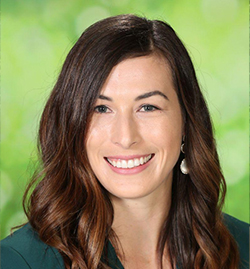
Dr. Erin Bailey is a former classroom teacher and literacy specialist. She currently serves as the vice president of literacy and content at Reading Is Fundamental. Her research explores learning through informal spaces such as public gardens, art museums, and social movements.

